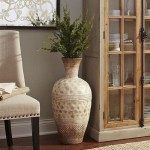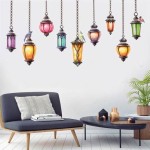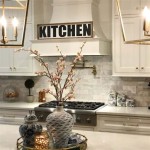What Is the Decorative Molding on Walls Called?
Decorative molding, also known as trim, is an essential element in interior design, adding visual interest and enhancing the overall aesthetic appeal of a room. It comes in a wide variety of styles, sizes, and materials, each with its own unique characteristics and applications. Understanding the different types of decorative molding can help homeowners and designers choose the perfect elements to complement their design vision.
Types of Decorative Molding
Decorative molding can be broadly categorized based on its function and location within a room. Some common types include:
- Crown Molding: Installed at the junction of the wall and ceiling, crown molding creates a visually appealing transition between the two surfaces. It can add elegance and sophistication to any room, particularly in traditional or formal settings.
- Baseboard Molding: Located at the base of the wall, baseboard molding serves both decorative and functional purposes. It protects the wall from scuffs and bumps, while also adding a finishing touch to the room.
- Chair Rail Molding: Installed approximately 30-36 inches above the floor, chair rail molding protects the wall from damage caused by chairs or furniture. It can also be used to divide the wall into distinct sections, creating a visual focal point.
- Window and Door Casing: Casing surrounds doors and windows, providing a decorative frame and enhancing their visual appeal. It can be made from various materials, including wood, plastic, and metal, and comes in a wide array of styles.
- Picture Rail Molding: Picture rails are horizontal moldings typically installed near the ceiling, providing a designated space for hanging artwork. This type of molding eliminates the need for nails or screws, preserving the integrity of the wall.
- Wainscoting: Wainscoting refers to decorative paneling that covers the lower portion of a wall. It can be made from various materials, including wood, tile, and stone, and can be customized with different patterns and designs.
Materials Used for Decorative Molding
Decorative molding can be made from a variety of materials, each with its own advantages and disadvantages:
- Wood: Wood is a popular choice for decorative molding due to its natural beauty, durability, and versatility. It can be painted, stained, or left unfinished, allowing for endless customization options.
- Polyurethane: Polyurethane molding is a lightweight and durable alternative to wood. It is resistant to moisture and temperature changes, making it suitable for use in bathrooms and kitchens.
- PVC: PVC molding is a budget-friendly option that is also moisture-resistant and easy to clean. It comes in a variety of colors and styles, making it a versatile choice for different design schemes.
- Metal: Metal molding, often made from aluminum or stainless steel, is known for its durability and resistance to rust and corrosion. It is a good choice for areas with high moisture levels or heavy traffic.
Installing Decorative Molding
Installing decorative molding is a relatively straightforward process that can be done by homeowners with basic DIY skills. However, for more complex projects, it is advisable to hire a professional installer.
The installation process typically involves the following steps:
- Preparation: Ensure the walls are clean, smooth, and free of any imperfections. This may require sanding, patching, or priming.
- Cutting: Measure and cut the molding pieces to the desired length. Use a miter saw for accurate angles and a good quality saw blade for clean cuts.
- Attaching: Secure the molding to the wall using construction adhesive or finishing nails. Use a nail gun for a faster and cleaner installation.
- Finishing: After the molding is attached, fill any nail holes or gaps with wood filler or putty. Sand the surface smooth and prime it before painting or staining.
The specific installation techniques may vary depending on the type of molding and the material it is made from. It is essential to consult with the manufacturer's instructions for detailed guidance.
Decorative molding is a versatile design element that can transform the look and feel of a room, adding character, elegance, and personality. By understanding the different types, materials, and installation techniques, homeowners and designers can create beautiful and functional spaces that reflect their unique style and preferences.

6 Types Of Decorative Molding To Glam Up Walls And Ceilings

Diffe Types Of Wood Wall Treatments

Ultimate Guide To The Types Of Mouldings Van Dyke S Rers

How To Install Decorative Wall Panel Molding An Easy Diy Weekend Project Jane At Home

6 Types Of Decorative Molding To Glam Up Walls And Ceilings

Diy Guide To Decorative Mouldings

Moulding Ideas For Walls Mans Lumber Home

How To Install Picture Frame Molding

10 Types Of Wall Moldings To Consider Before Remodeling Your Home

Types Of Moulding The Home Depot
Related Posts







